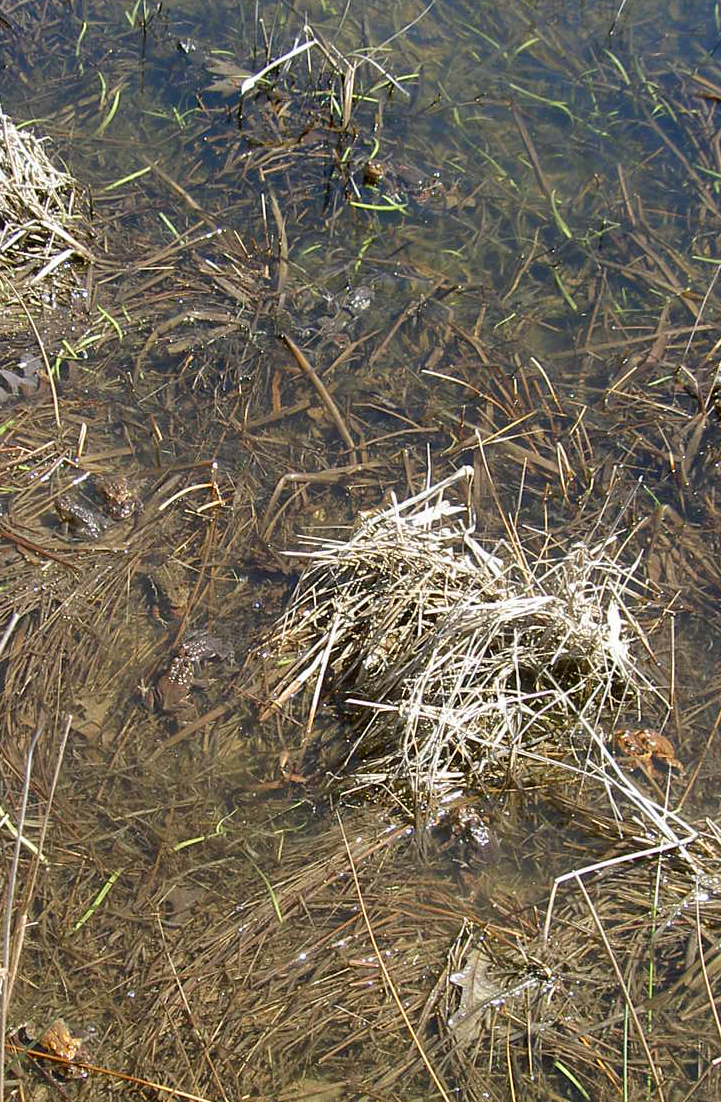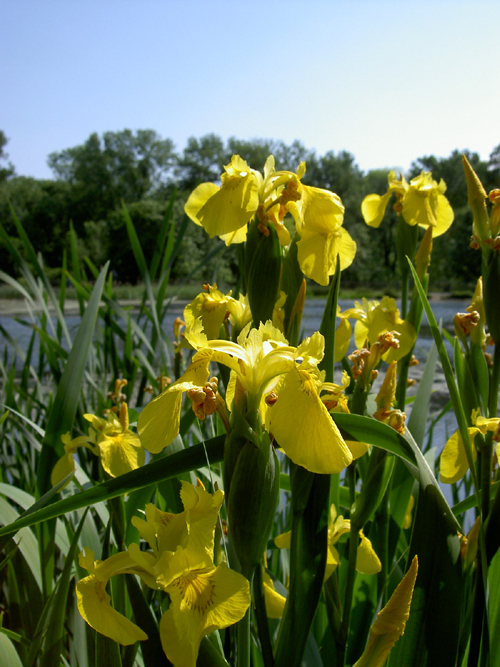When we planned our trip to Hilton Head, I researched the refuges in the area and decided to stick with Pinckney Island NWR. It is close to the island, just over the bridge on the way to the mainland, and it promised miles of walking trails. Once we arrived in the area, I have to admit that the alligators put a bit of a damper on my enthusiasm for going hiking around in the marshes. I was nearly content to have spotted a Yellow-throated Warbler for the first time just across the street from our rental, in addition to Brown Thrasher, House Finch, Red-bellied Woodpecker, Blue Jay, American Crow, Common Grackle, Boat-tailed Grackle, Northern Mockingbird, Eastern Bluebird, Tufted Titmouse, Green Heron, Great Blue Heron, Downy Woodpecker, Mourning Dove, Rock Dove, and Carolina Chickadee just in the residential area where we were staying. In the end I manned up, and we went ahead with the plan and spent a productive Wednesday afternoon at the refuge, spotting several new life birds and revisiting some old favorites.
Just inside the refuge, there was a flock of migrating Whimbrels, with a Black-bellied Plover, a couple of Dunlins, and some Semi-Palmated Plovers mixed in. There was also a larger gray bird that was either a Willet or a Red Knot in winter plumage; having seen both of these birds before we chose not to spend all day squinting through our under-powered binoculars to make a firm identification. Shorebirds are the most frustrating to identify with the binoculars we have; they’re typically farther away with less distinctive coloring than woodland birds, so we’ve learned to do our best and then move on. Once inside on the paths we saw old friends—Northern Cardinal, Ruby-throated Hummingbird, Carolina Wren, Yellow-bellied Sapsucker, Blue-gray Gnatcatcher—but none of the tanagers that were rumored to be around. On the mudflats we saw our next new bird, a flock of White Ibis with brown-backed young. Further along, at the aptly named Ibis Pond, we found herons of all shapes and sizes, those we’d seen before (Great Blue Heron, Green Heron, Great Egret, Snowy Egret, Black-crowned Night Heron) and two lovely new additions: Little Blue Heron, Tri-colored Heron, and an adult male Anhinga (we later saw a female near our house). The Little Blue Heron wasn’t exactly the first sighting; we’d seen a young one the day before along the lagoons where we were staying, and I probably saw one during our trip to Chincoteague five years ago. Nonetheless, this was the first up close and confirmed sighting of an adult bird for me, and it was fun to watch it fly back and forth bringing bits of grass and twigs for a nest.
After hanging out at Ibis Pond for a while, we hiked a loop around what was advertised as Osprey Pond and Wood Stork Island, highly motivated to get a sight of the uncommon and elusive Wood Stork. We never did. What we did catch sight of, though, were gazillions of mosquitoes and a few alligators; the latter sighting led us to conclude that Pied-billed Grebes must not be very tasty, because on two occasions they were the only bird in the water near the enormous prehistoric reptile. During this trek we saw more Eastern Bluebirds, several Great-crested Flycatchers, an Eastern Phoebe, Red-winged Blackbirds, Brown-headed Cowbirds, the aforementioned Grebes, and a pair of Common Moorhens, but nary a stork. Nor an Osprey for that matter, but we had the excessive good fortune to have an Osprey nest in a palm tree behind the house next door, complete with young that plaintively cried out each morning as its parents harried it from the nest and into the air. Having booked it out the woods at the refuge and left the grass paths behind, we made another circuit of Ibis Pond in the hopes of finding a Wood Stork but only saw a couple more alligators, which apparently aid the nesting birds by eating predators like raccoons should they attempt to go for the nest. Or so the sign near the bench where we collapsed in a haze of citronella spray informed us. On the way out of the refuge, we did manage to see a male Painted Bunting at close range, which cheered our spirits greatly; they nest on the refuge and we’d been unable to flush one on the way in. I consider six new life birds to be a successful excursion, and I left happy; having to bark at some mating raccoons to get them off the path was just icing on the cake.
Overall, Hilton Head was a great place for wildlife sightings. In the lagoons around our housing development we saw several kinds of very large turtles, one of which we had to rescue from the middle of a road—Carolina Diamondback Terrapins, Eastern Mud Turtles, probably Chicken Turtles, and possibly Common Musk Turtles (I believe I saw the distinctive two lines on the head, but they dislike brackish water). We had Green Anoles around the house, and my partner startled a Five-lined Skink out of the bathroom when we visited Daufuskie Island on Thursday. During the boat ride over, we also spotted a couple of new birds—Royal Tern and what we are pretty sure was a White Pelican—and some familiar ones (Brown Pelican, Double-crested Cormorant, Least Tern, Forster’s Tern, Laughing Gull, Ring-billed Gull, Barn Swallow and Tree Swallow) in addition to several groups of Bottlenose Dolphins. We saw a whole flock of Black Vultures along the side of a road, with their white hands. Add to these the starfish, crabs, clams, and keyhole urchins we saw on the beach, plus the dead armadillos on the side of I-95 and the mystery snake we saw the heron eating behind our house, and it was quite the wildlife-filled vacation.



